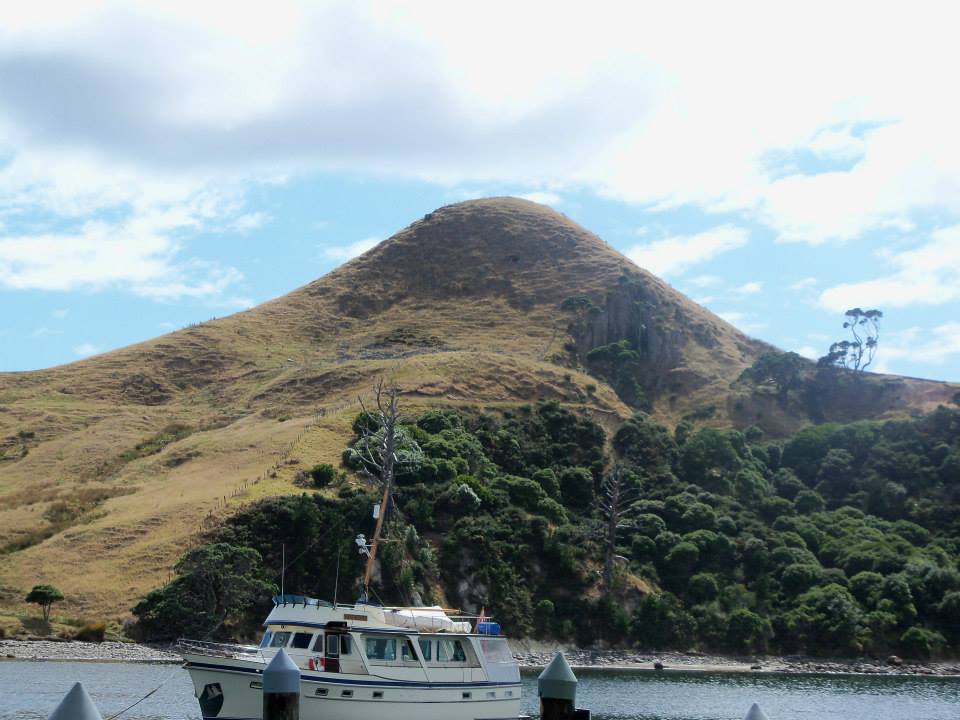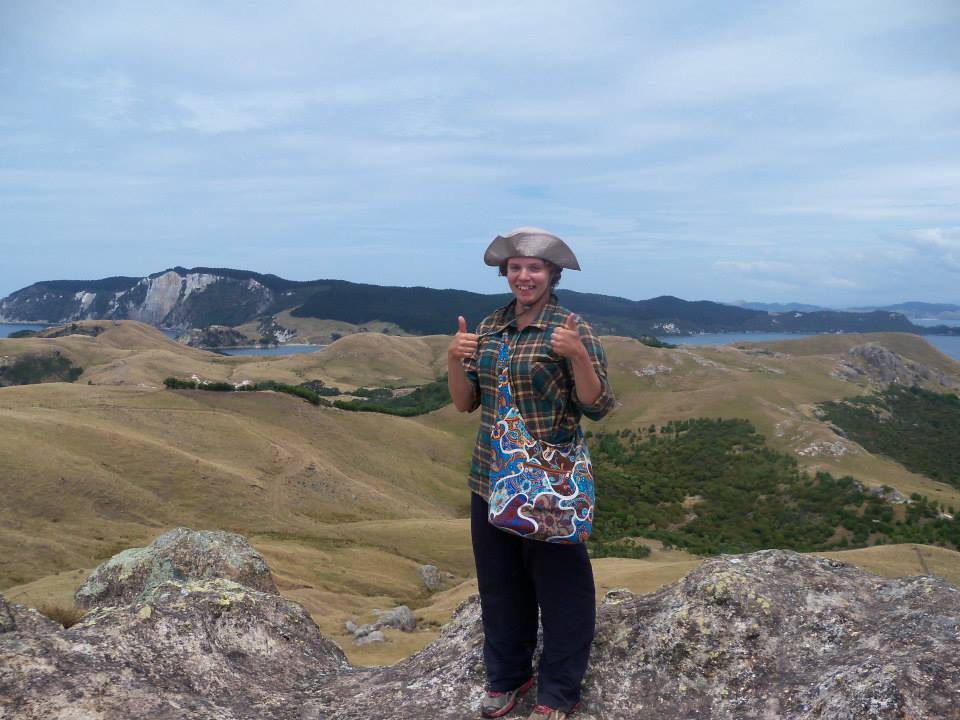I’d been in New Zealand for a week—no more, no less—when I embarked on an archaeological field school with 20 strangers. At that point, I knew nothing about archaeology other than a few terms I’d gleaned from an introductory course two years prior and I knew even less about archaeology in New Zealand.
In the pre-departure orientation, the professor told the group: “After this, a lot of you may not want to be archaeologists.” But I wasn’t deterred. If anything, that only boosted my confidence that I was on the right path and made me excited about all the things I had to learn about the field.
With that in mind (and little else), I departed from Auckland to Whitianga where our class took a ferry to Great Mercury Island/Ahuahu. The island is generally regarded as one of the first stopping points made by ancestral Maori before they continued on to the New Zealand mainland. Today, the island is privately owned and its primary inhabitants are sheep, a handful of farmers, and a few individuals who live there seasonally. Half of the island is densely forested while the other half has pastures and hills that offer breath taking views of the Coromandel peninsula (to the West) and the Pacific ocean (to the East).

In addition to the stunning views and the serenity one only finds on a largely uninhabited island, there was a wealth of information in the earth around us. Our crew worked on the Northwestern side of the island where there were over a dozen terraces that lined a steep hill. Our work entailed surveying that portion of the island, as well as the Northeastern side, for signs of additional terraces, excavating portions of some of the topmost terraces, assisting the crew leaders with GIS (Geographic Information Systems) scans of the area, and creating detailed section maps of all areas excavated.
Through these methods, we were able to determine where residential structures once stood via the identification of postholes (small, circular shaped patches of discolored dirt). We also were able to identify features within the structures–hearths, hangi pits (an in ground type of oven used to prepare chicken, seafood, and kumara–New Zealand sweet potatoes), and shell middens (areas where large amounts of shells were discarded after use). After the field school and a few weeks break before the semester started, the course continued in the form of lab research. My project was on obsidian stone tools, flakes, and cores. This involved recording features on over 1,000 obsidian artifacts and analyzing the data to identify trends in artifact distribution and usage.

Additionally, I learned about the concept of tapu. This is a Maori word that refers to something that is sacred and should be treated in certain ways. For example, all artifacts we recovered and removed from site would be repatriated to the spot we recovered them from, and only artifacts approved by the Maori community were allowed to be removed. Tapu also manifests in different ways in everyday life–taking your shoes off before entering a building, not sitting on tables (this was one that sounds like a no-brainer, but I also grew up where it wasn’t necessarily best practice to sit on a picnic bench table, but was a common enough occurrence during summer outings), and many others.
Both the field experience and the lab experience were incredibly valuable to me academically and professionally. I likely wouldn’t have had the opportunity to partake in a field school through my college due to cost and timing, but by being able to study abroad through the Gilman, I was able to not only learn more about archaeology, but also about what I enjoy about the field and how I wanted to proceed personally and professionally from there.
Upon returning to the states, I found myself thinking of my professors statement before the field school. Did I still like archaeology? Yes, absolutely. Was I certain that’s what I wanted to do for the rest of my life? No, definitely not. The field school and subsequent research showed me that I love being on the field–I love being outdoors, working hard to unearth elements of humanity’s past, and handling artifacts with care and respect. But I found the subsequent research to be a bit too rigid and removed from the dynamic cultural aspects like tapu that I enjoy. The experience showed me that I prefer to work in situations that involve learning about a culture’s history and then applying that in the present. Be it through language learning (a passion of mine) or artifact preservation, I like to know where communities are at in the present and how history continues to shape their identities.
Overall, my archaeological experience in New Zealand continues to positively affect me to this day. For example, I recently participated in a burial recovery effort of Dakota ancestral remains. Without the first hand knowledge and self-reflection the Great Mercury Island project provided me, I may not have found this project or known how fitting it was to my interests. The project was under the direct supervision of Dakota elders and all remains and artifacts were handled in a culturally respectful manner. I enjoyed being able to sit down and talk to Dakota elders and learn about the history and take part in something so meaningful.
My advice for Gilman Scholars is to be open-minded, follow your interests, and reflect on your experiences. You don’t have to go on some grand adventure or take part in some prestigious internship, so long as you are always striving pursuing your interests. If you’re interested in music and want to know more about the music in your host country, seek out whatever opportunity you’re comfortable with–be it attending a live show, speaking with a professor of music, or joining a student club. If you keep hearing about some small town in a remote area of your host country and want to go explore, please do! And with each experience that you partake in, ask yourself what it means to you, remind yourself of why you love the thing you do, and when your study abroad experience is over, keep moving forward and pursuing your interests. Doing so will help you in your academic and professional career paths by allowing you to know yourself and take pride in your experiences.



